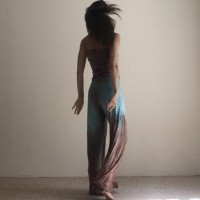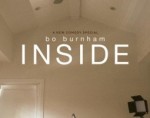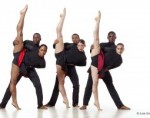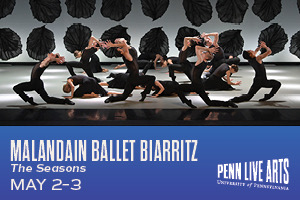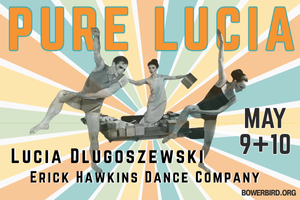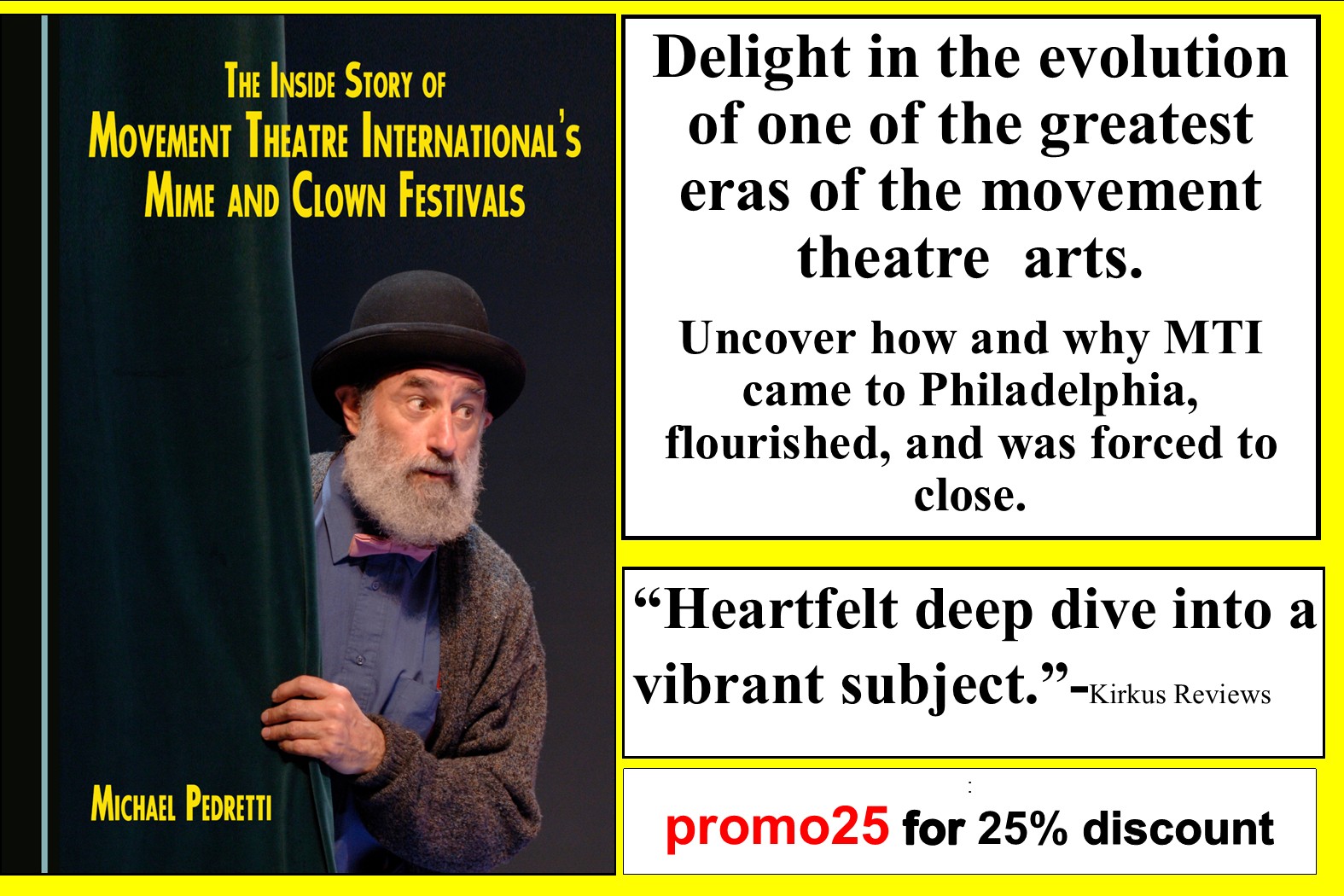
My body, and other questions I had for Annie Wilson
by Kat J. Sullivan
I can’t get Christina Gesualdi out of my head. She loped around the space (and I mean “space”—onstage, amongst audience members, onto the adjacent staircase) with these gimpy little treads, settling into a pause with soft rebounding bounces. I remember it so well because it was so delicate, how she’d lose herself to her blinking, a heel slightly lifted and hip slightly cocked, slumped just enough. Topless, with her creamy half-slip, she was so new and small.
Kat J. Sullivan: I’m curious about the moments in Lovertits that referred to the killing and gutting of goats. The dichotomy between dissecting a body to use it for its parts and the sort of reverential respect with which the killing is undertaken stayed with me. Could you speak to that the ways we might apply that regard to women’s bodies, if it was a consideration behind your choice—whether for a specific scene or as a concept generally addressed by the piece?
Annie Wilson: This moment is probably the densest one for me, so it’s nearly impossible to parse out. Actually, I don’t think I can. I know many considerations went into it, and what you touch on is certainly one of them. I think it touches on so many of the threads of the piece and so many dichotomies in the piece and in the world. I think you should run with whatever you took out of it.
--
I’m thinking of Jenna Horton, mapping out her own body as Philadelphia; her vagina, of course, is City Hall. I’m thinking of how unfazed I was by her fingers probing her labia and her wry smile (a clue: “I know what I’m doing”). Maybe that’s the key; it’s not shocking when a woman intentionally wears her own nakedness, because she decides if it’s sexual or not (but it has to be, in our culture) (but how can it not be?) (but I was there and it just … wasn’t).
Simpler: It wasn’t about the bodies at all. But it was the bodies.
KJS: Lovertits had an anti-climactic, non-event quality to me: a sort of collage of moments rather than the arc and fall of a particular scene. It wasn’t unpleasing but it did surprise me—perhaps I expected some strongly-brewed stance to be bellowed across the hall, punctuated with middle fingers raised high and legs spread wide. Rather, I felt that you allowed the meaning inherent in what took place on stage to wash out over the audience at its own pace, letting a moment speak for itself rather than trying to speak through it. Did you intend to subvert any audience expectation to be entertained or shocked?
AW: I love this observation and question. There are a few things at play:
Firstly, we all agreed we wanted to deconstruct the burlesque formula—which is almost always a slow tease, where clothes get removed slowly, then faster, then a huge reveal of pastied nipples to a crescendo in music, and then the piece is over. It’s very sexy, life-affirming, it ends on a very “up” note. It’s quite formulaic and so reminiscent of the way male arousal generally works during sex. I wanted to make a piece that reflected the sexual experience of myself and my collaborators, which is not so formulaic. Also, I went to school at UArts, in which just about every piece choreographed ended with a huge unison number, and I promised myself I would never make that piece. In a sense, I wanted to striptease the idea of a burlesque performance. The show starts zippy and funny, and then starts to unravel. What happens after you reveal a clitoris? Where the hell else can you go? What is the logical conclusion of a burlesque show? For me, that’s around the relationship of life and death. But I don’t know—everything is, so that’s probably unfair.
As far as a middle-finger-and-legs-spread message, it was important to have the politics of the piece baked as deeply in there as it could go. I couldn’t bear to tell the audience how to think about their bodies. I hate work like that. I want to open the door for you to see the performers’ bodies differently, to feel your own body differently, but you don’t have to walk through the doorway. I wanted to spend the energy I might have spent bellowing across the hallway making it as complex and layered as I could.
--
The bathing scene. I didn’t see much; my chair was too high up in the stand and the bodies of others blocked my view of the body lying on the floor and the bodies washing her. Water lapped up the side of a basin (I think there was a basin, at least). The air was bluer: and no, I don’t mean the lighting. I mean the crispness of the moment, the feeling of holding my breath in anticipation even though I wasn’t. Of being baptized with frost.
KJS: At many points throughout the piece, I noticed moments in which the women would touch one another in a way that was tender without being erotic. (I am thinking of when Jenna and Ilse Zoerb cradled one another, completely nude, center stage. I sensed a total acceptance that their bodies would come into contact—that it was not carnal but sweet.) I believe that image is a rarity in American culture, which displays women meeting for coffee together or engaging in pornographic acts together, but little in between. What, in your opinion, is the power of presenting women who interact in a way that is intimate without being sexual?
AW: In general, something that I am addressing in Lovertits is Americans’ terror of bodies. We really are terrified of our bodies: naked, dead, sick—anything that’s not reflected in an image onscreen. Myself included. I blame it on our Puritanism. Platonic touch is something I think everyone in the world should do more of. And platonic intimacy is something I think we should have more of. So there are many ways in which I am trying to poke the audience, saying, “See how this body scares you? See how it is actually not a threat?”
I think also the piece is showing a bunch of different ways a naked woman’s body can be sexual or sexy, but also all these other things. Not erasing the sex, just noticing that there’s a shitload of other stuff there! So that moment with Jenna and Ilse does, for me, have a sort of homoerotic, post-sex vibe to it. But it also has a platonic hang-out intimacy vibe to it. That section is called “snuggling puppies” based on a contact improvisation exercise Lee Fogel and Jenny Sawyer taught me. So there’s a puppy vibe there. There’s the metaphor that we are naked and alone in the elements and the best we can hope for is a few moments in contact with another body, in any manner, to remind us that we are alive. And it can be a metaphor for the sort of emotional intimacy that women can have together that is so remarkable. I hope its power comes from presenting a multitude of images of women in a multitude of relationships with each other and with themselves.
--
I went home and shaved my legs. I’m not sure what that means yet.
Lovertits, Annie Wilson, Bryn Mawr College, January 28-30. http://bmcpas.blogs.brynmawr.edu/2016/01/14/bryn-mawr-college-performing-arts-series-presents-lovertits-by-annie-wilson/
By Kat J. Sullivan
February 25, 2016

